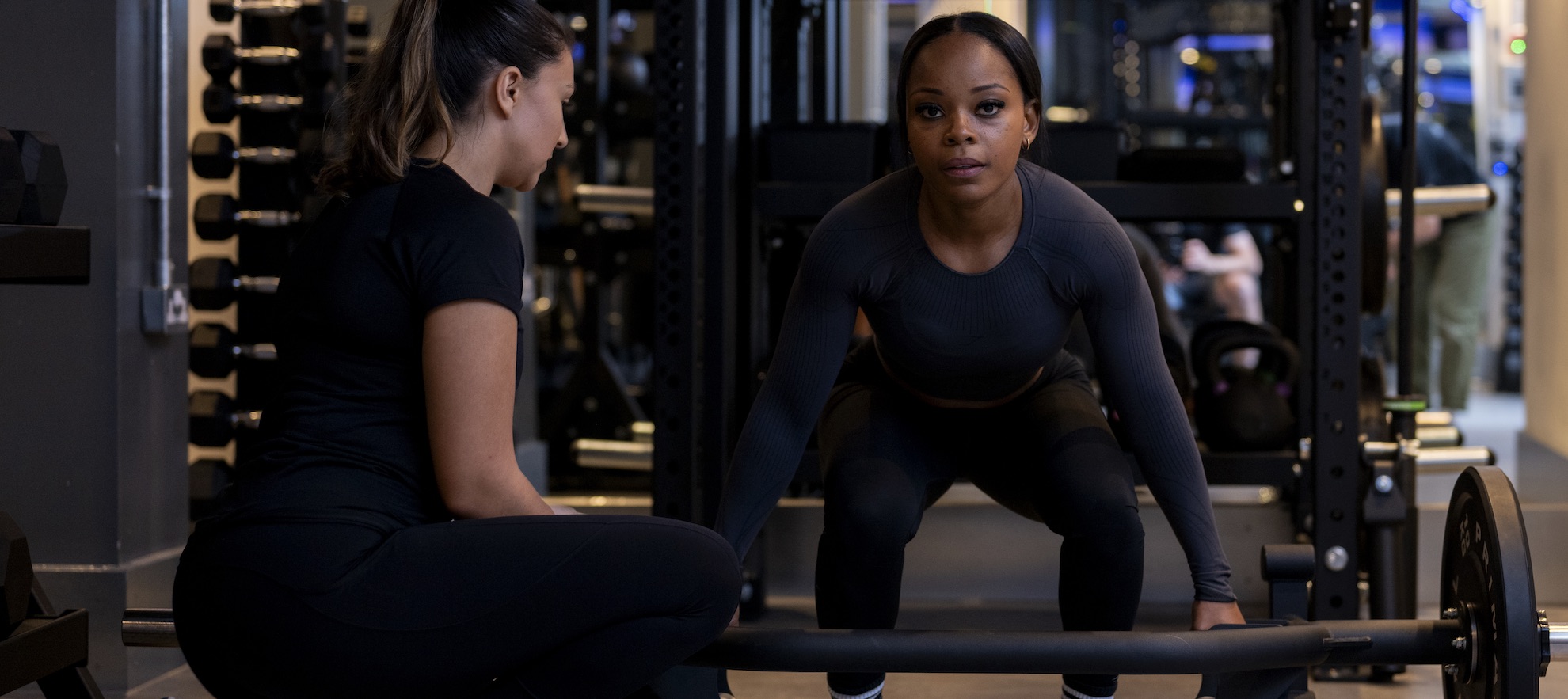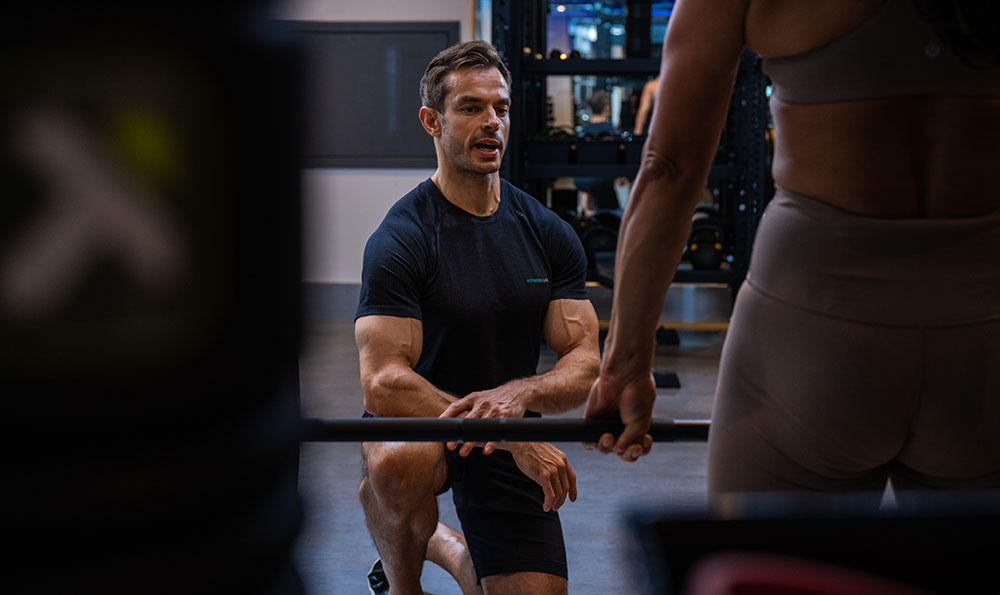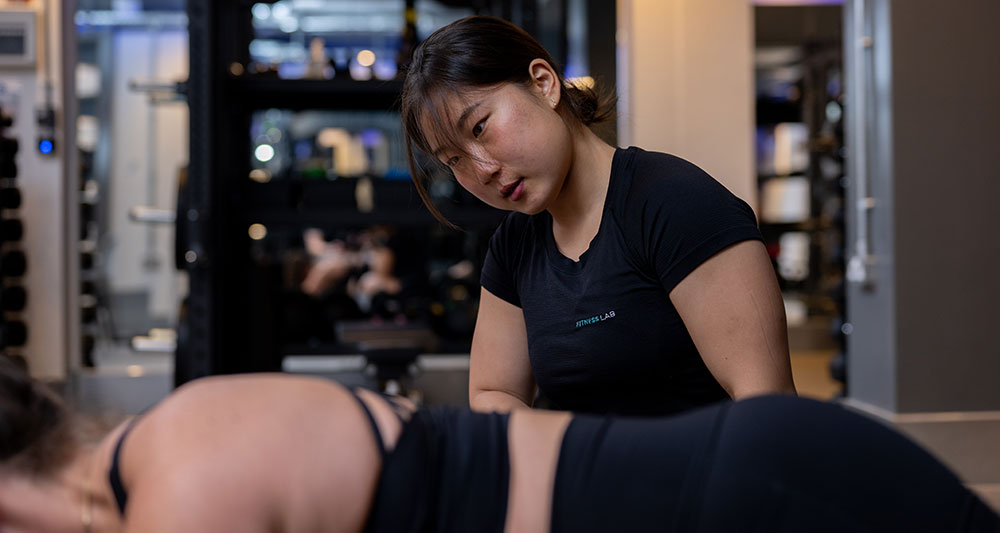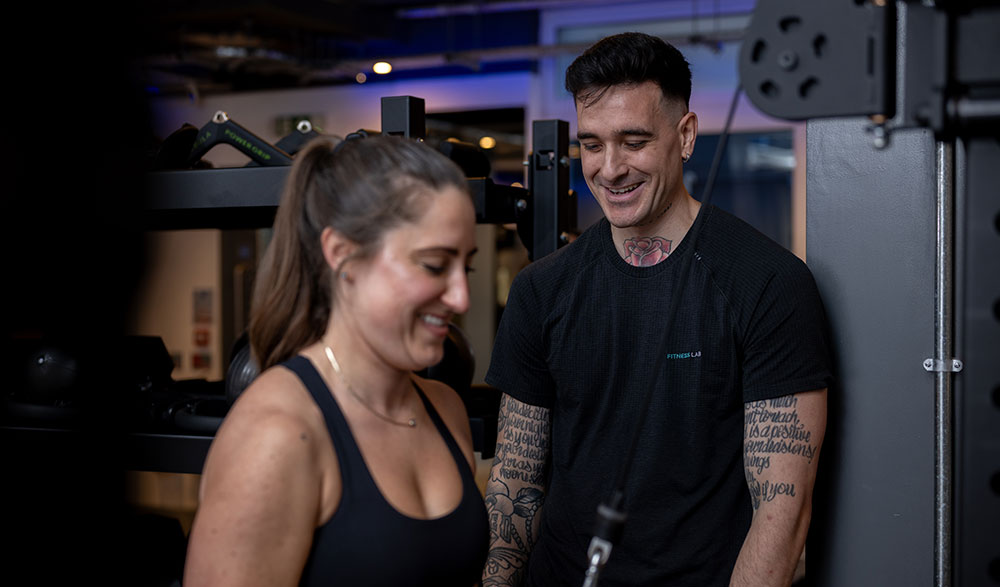Mayfair, Soho, and Fitzrovia Studios
Private 1-1 Personal Training Focused on Women's Strength

The Best Personal Training for Women in London
It’s often hard for women to find world-class training and facilities for strength training – and that’s especially true for beginners. At Fitness Lab, our experience, knowledge, and outstanding private facilities make us the perfect place for improving your strength, whatever your current level of exercise history.
As is always the case with Fitness Lab, you’re guaranteed a completely bespoke-to-you strength training experience, world-class 1-1 coaching in impeccable private studio space, immaculate changing areas, and no membership fees – ever.
Private Training In Your Own Studio Space
As health and fitness professionals, we’re very aware that typical gym spaces often aren’t appealing to women who are looking to work towards fitness goals. At Fitness Lab, we break the mould – we have personal training ‘pods’ that are exclusively yours when you work with your qualified personal trainer.
Everything you need for your tailored workouts can be found in your pod – including cardio and strength training equipment, as well as all those other useful items that can be hard to track down in a gym – like mats, rollers, steps, balls, and more. What’s more, the only eyes on you will be your dedicated coach – because privacy is important for everyone.


Stronger Doesn't Mean Bulky
Women have traditionally avoided strength training, owing to the old idea that adding muscle will create a masculine physique – but this couldn’t be further from the truth.
Because of the hormonal differences between men’s and women’s bodies, strength training for women results not in additional mass – but in a toned physique, improved posture, and, thanks to the number of calories muscle burns at rest, usually a lower body-fat percentage.
If you’ve tried HIIT classes and endless cardio sessions with no real difference in what you see in the mirror, we strongly recommend strength training.
A Truly Personalised Experience
No two Fitness Lab clients have the same workout plan – because everyone’s different.
If you decide Fitness Lab is right for you, we’ll start with a detailed conversation about what you’d like to achieve. From there, your dedicated coach will put together a strength and conditioning plan that we’re 100% sure will get you there.
Of course, a lot of strength training revolves around what you eat – and we’re absolutely more than happy to help as much or as little as you need in this area too. Don’t panic – there are no huge changes needed – just small, manageable adjustments that we’ll build upon together – and you’ll be astounded at how they add up.

Real People, Real Stories, Real Results
We know personal training can be life-changing – but we don’t expect you to take our word for it. Read more about a real person’s journey with Fitness Lab.

No Membership Fees
As a Fitness Lab client, you do not pay ongoing membership fees — you pay for the sessions you use and nothing more.
This means you’ll always get outstanding value for money – and you can adjust your strength training sessions up and down as required so they fit perfectly around your life and schedule.
You can even share the sessions you’ve paid for with a spouse, family member, colleague or friend too.
What Happens at a Personal Training Consultation?
When you get in touch with Fitness Lab, we’ll call or email to arrange a free, no-obligation 1-hour consultation at the studio of your choice with a world-class coach we think will suit your needs.
During your consultation, you’ll get a tour of the studio, and your personal trainer will chat with you about your goals. We’ll carry out a detailed movement assessment and a professional body composition scan – helping to identify strengths and potential weaknesses. From there, your coach will explain exactly what your sessions would involve.
It’s the perfect opportunity to see if Fitness Lab feels like a good fit for your life.

What Do Our Clients Say?
We do everything we can to be the best personal training service in London, and that effort is reflected in our customers’ feedback.
Rated
across

